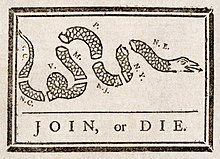Cartoonist
 | |
| Occupation | |
|---|---|
Occupation type | Artprofession |
| Description | |
Fields of employment | Publishing |
Related jobs | Editorial cartoonist Comics creator |
Acartoonistis avisual artistwho specializes in both drawing and writing[1]cartoons(individual images) orcomics(sequential images). Cartoonists differ fromcomics writersorcomics illustrators/artistsin that they produce both the literary and graphic components of the work as part of their practice.
Cartoonists may work in a variety of formats, includingbooklets,comic strips,comic books,editorial cartoons,graphic novels,manuals,gag cartoons,storyboards,posters,shirts,books,advertisements,greeting cards,magazines,newspapers,webcomics,andvideo game packaging.
Terminology
[edit]A cartoonist's discipline encompasses both authorial and drafting disciplines[1](seeinterdisciplinary arts). The terms "comics illustrator", "comics artist", or "comic book artist" refer to the picture-making portion of the discipline ofcartooning[2](seeillustrator). While every "cartoonist" might be considered a "comics illustrator", "comics artist", or a "comic book artist", not every "comics illustrator", "comics artist", or a "comic book artist" is a "cartoonist".
Ambiguity might arise when illustrators and writers share each other's duties in authoring a work.[3]
History
[edit]Editorial cartoons
[edit]The Englishsatiristandeditorial cartoonistWilliam Hogarth,who emerged in the 18th century, poked fun at contemporary politics and customs; illustrations in such style are often referred to as "Hogarthian".[4]Following the work of Hogarth,editorial/political cartoonsbegan to develop in England in the latter part of the 18th century under the direction of its great exponents,James GillrayandThomas Rowlandson,both from London. Gillray explored the use of the medium for lampooning andcaricature,calling the king (George III), prime ministers and generals to account, and has been referred to as the father of the political cartoon.[5]

Origin in the U.S.
[edit]While never a professional cartoonist,Benjamin Franklinis credited with the first cartoon published inThe Pennsylvania Gazetteon May 9, 1754:Join, or Die,depicting the American colonies as segments of a snake.[6][7]In the 19th century, professional cartoonists such asThomas Nast,whose work appeared inHarper's Weekly,introduced other familiar American political symbols, such as theRepublican elephant.[6]
Comic strips
[edit]Comic stripsreceived widespread distribution to mainstream newspapers bysyndicates.[8]
Calum MacKenzie, in his preface to the exhibition catalog,The Scottish Cartoonists(Glasgow Print Studio Gallery, 1979) defined the selection criteria:
- The difference between a cartoonist and an illustrator was the same as the difference between a comedian and a comedy actor—the former both deliver their own lines and take full responsibility for them, the latter could always hide behind the fact that it was not his entire creation.[9]
Many strips were the work of two people although only one signature was displayed. Shortly afterFrank WillardbeganMoon Mullinsin 1923, he hiredFerd Johnsonas his assistant. For decades, Johnson received no credit. Willard and Johnson traveled aboutFlorida,Maine,Los Angeles,and Mexico, drawing the strip while living in hotels, apartments and farmhouses. At its peak of popularity during the 1940s and 1950s, the strip ran in 350 newspapers. According to Johnson, he had been doing the strip solo for at least a decade before Willard's death in 1958: "They put my name on it then. I had been doing it about 10 years before that because Willard had heart attacks and strokes and all that stuff. The minute my name went on that thing and his name went off, 25 papers dropped the strip. That shows you that, although I had been doing it ten years, the name means a lot."[10]
See also
[edit]- Comics creator
- Daily comic strip
- Editorial cartoonist
- Female comics creators
- Glossary of comics terminology
- List of cartoonists
- List of newspaper comic strips
- List of manga artists
- Mangaka
- Penciller
- Sunday comics
- Sunday strip
- Webcomic
Societies and organizations
- Association of American Editorial Cartoonists
- Association of Illustrators
- Cartoonists Rights Network International
- Indian Institute of Cartoonists
- National Cartoonists Society
- Society of Illustrators of Los Angeles
- Society of Children's Book Writers and Illustrators
- Society of Illustrators
- Society of Illustrators of Los Angeles
References
[edit]Citations
[edit]- ^abLyga, Allyson A. W.;Lyga, Barry(2004).Graphic Novels in your Media Center: A Definitive Guide(1st ed.). Libraries Unlimited. p. 161.ISBN1-59158-142-7.
- ^Rojahn, Maragret (4 May 2022)."10 Reactions To Neal Adams's Passing From The Comics' Community".screenrant.Screen Rant.
- ^Contemporary Literary Criticism,Volume 195, Gale, 2005, p. 167: "(Full nameNeil Richard Gaiman) Englishgraphic novelist".
- ^The British Museum. Beer Street, William Hogarth - Fine Art PrintArchived3 March 2010 at theWayback MachineRetrieved 11 April 2010.
- ^"Satire, sewers and statesmen: why James Gillray was king of the cartoon".The Guardian.16 June 2015.
- ^abHess & Northrop 2011,p. 24.
- ^"Encyclopedia of Greater Philadelphia |" Join, or Die, "Pennsylvania Gazette, 9 May 1754".philadelphiaencyclopedia.org.Retrieved24 October2021.
- ^"The Comics Reporter".Retrieved17 November2009.
- ^MacKenzie, Calum.The Scottish Cartoonists.Glasgow Print Studio Gallery, 1979.[page needed]
- ^"Toon Talk: Two Comic-Strip Artists Discuss the Craft They Love".Los Angeles Times.28 September 1989.
Works cited
[edit]- Hess, Stephen; Northrop, Sandy (2011).American Political Cartoons: The Evolution of a National Identity, 1754-2010.TransactionPublishers.ISBN978-1-4128-1119-4.
Further reading
[edit]- Steve Edgell, Tim Pilcher, Brad Brooks,The Complete Cartooning Course: Principles, Practices, Techniques(London: Barron's, 2001).
External links
[edit]Societies and organizations
- Professional Cartoonists' Organisation (UK)
- National Cartoonists Society
- Association of American Editorial Cartoonists
- Society of Illustrators
- Society of Children's Book Writers and Illustrators
- Society of Illustrators of Los Angeles
- The Association of Illustrators
- The Illustrators Partnership of America
- AIIQ - l’Association des Illustrateurs et Illustratrices du Québec
- Colorado Alliance of Illustrators
- Institute For Archaeologists Graphics Archaeology Group
- Guild of Natural Science Illustrators
- Guild of Natural Science Illustrators-Northwest
- Illustrators Australia
- Newsart
- Australian Cartoonists Association
